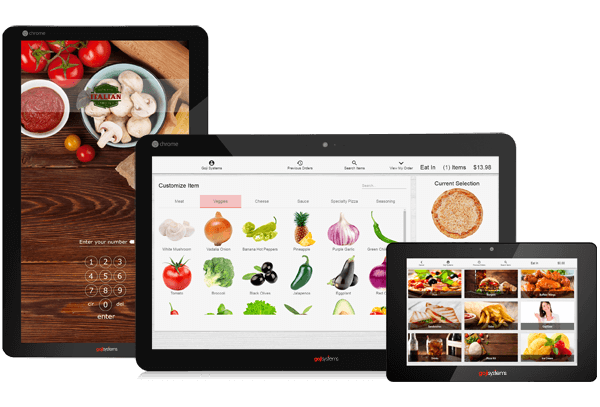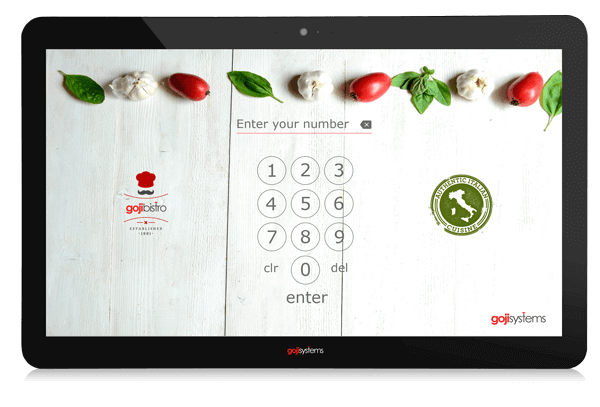A Guide on Self Service and Self Ordering Kiosk Technologies
If you’re in the market for self service and self ordering kiosks I’m sure you must at least have a basic understanding of how it can benefit your business. So the next major question is which one do you choose and how do you make that decision? What are the key differences?
Just like any product in the market self service and self ordering kiosks vary in shape, size, price, features, and maintainability. All these things boil down to how much value it can actually bring to your restaurant, fast food, or fast casual business. Self service and self ordering kiosks are designed to be an ordering platform between the customer and a business where a customer is able to easily convey what they want. In order to accomplish such a task there are many different components that go into a self service and self ordering kiosk. In this article I’ll share with you the most important factors of a self service and self ordering kiosk and where those differences will be are and try to help you determine where you should be focusing your time, energy, and resources.


Kiosk Technology
Tech is where the differences are most prevalent but some things might be less obvious to a layperson. Also keep in mind that your technology is something that will affect both the business experience and the customer experience. So understanding how a particular technology decision affects the customer experience as well as how it affects your business will give you a great perspective on where you need to focus your attention.
Operating System
Most people don’t really think about Operating systems when making a decision about self service and self ordering kiosks. What is an Operating System(OS) and why it’s so important to consider the OS when deciding on self service and self ordering kiosks? The OS is the foundation or software environment that your hardware will be running. This is the environment for your software to live in. A loose analogy could be that an OS is like where you’d build the foundation of your house on. If you built a house on water, sand, mud, dirt, or rock how would this affect the house you’re building? How would it affect the cost, the hardware, the design, the maintenance of that house, and how you live in it? The same general principles apply with an OS. Let just say for our analogy the house would be the hardware. Similarly your OS surely will determine the kind of hardware and equipment you’re able to use for your self service and self ordering kiosks. If you built a house on water, sand, mud, dirt, or rock it would greatly determine the hardware and equipment you’d use to build your house. In the same way the OS will determine the kind of software you’re able to run on your self service and self ordering kiosks and also how reliably it will operate. The OS will most definitely determine your limits on hardware, capability, and cost of maintenance/repairs just like building on sand vs rock. So as you can see the operating system you choose has a wide impact on your choices of software and hardware and the benefits and limitations that are associated to those software and hardware combinations.
Which OS is the best?
When it comes to OS for self service and self ordering kiosks my opinion is a bit biased because GojiKiosk runs on ChromeOS and of course we believe that we’ve chosen the best operating system for our self service and self ordering kiosk to run(live) on. It would take too long to cover all the pros and cons of the various operating systems in this article. So, if you’re interested to learn more about operating systems please feel free to read my article on “Operating Systems for Self Service and Self Ordering Kiosks – Pros and Cons.”
For the purposes of this article, we can see that it’s pretty clear that the OS can determine a whole lot about the rest of your technology. It’s a part of the decision making process that is very often overlooked. Don’t take your OS decision lightly.

Software
Software is the main part of the technology you and your customers will experience most directly. This makes your self service and self ordering kiosk software a top priority in your decision making process. Self service and self ordering kiosk software is the part of the decision making process that typically gets the most attention. Depending on the OS that you’ve chosen your software choices will vary.
Generally speaking the top brands are going to be able to provide the basic features and functionality reliably. Besides the actual software brand you’re really going to need to dig deep into the features and functionality because there are subtle and major differences in how every company has implemented and designed their software to work.
Features
Features and functionalities are where you’ll need to scrutinize the most. Here’s why. Every single product will list a bunch of features and functionalities. However the implementation and design of how those features are put together make a big difference. Let’s go back to our house analogy. Let’s say the feature we really need is a door. Depending on how the door is designed it may be too small or too heavy or too narrow or positioned in the wrong place or not suitable for the conditions of that house. Let’s say the door knob may be too difficult to turn. Does merely having a door check off your checklist for a door? Sure, but does the door’s functionality and design truly fit your needs? To your surprise the answer may be no. So when it comes to software features you’ll need to investigate on how your most needed features are designed and implemented. I don’t recommend comparing software products by simply listing their features. You may have a few products that state that they are customizable and I’m sure all of them are, but the difference will probably in how deep the customizability goes and how difficult it is to make that happen. Many features are often have the same label such as “integration”, but they definitely vary in very many ways. Sometimes it might be too late before you realize it’s not how you wanted the self service and self ordering kiosk to operate or how you wanted to manage it. Do your homework don’t be fooled by a long list of features.
Integration
Most self service and self ordering kiosks and Point of Sale systems are built to be proprietary. What this means is that if you have Acme brand POS you can only use Acme brand Kiosk and maybe even only Acme brand hardware as well. Obviously that is going to greatly limit your choices if you’re going to stick with the same POS. However the trend is slowly moving towards a kiosk first focus. This means business owners are willing to choose the kiosk that will help them fulfill their vision for self service and self ordering kiosk over keeping a POS system that will hold them back from it. Most self service and self ordering kiosk solutions in the market today are not designed for flexibility in their integrations with POS, credit card processing, and loyalty platforms. I think it’s important to maintain flexibility with your technology integrations because you won’t be trapped in the type of technology solutions you can change to in the future. Also so you can keep the POS you’ve been using so you don’t have to train your staff and go through the motions of a new POS.

Integration is a can of worms just like features. The reason being is because not all integrations are created equal. Some integrations are not as complete as others. Meaning some integrations are very basic and can only accomplish basic functionality. Other integrations are complete and can accomplish advanced functionality such as loyalty integration with the POS. However the POS integrations themselves are not always the fault of the self service and self ordering kiosk company. You may simply find that the POS provider did not create a way for a deeper integration for self service and self ordering kiosks. So before you dive in, make sure to find out what kind of capabilities that your desired self service and self ordering kiosk solution is able to perform with the Point of Sale system you’re trying to integrate with.
Hardware
Your hardware will vary depending on the OS you choose. However, one thing to note is the reliability, durability, and variety in the hardware you will utilize. If you’re planning on a kiosk only business, you’ll probably want to make sure that your self service and self ordering kiosks are built for commercial use and heavy traffic. The other thing that your hardware will greatly affect is the price. You can get custom enclosures and have very large touch screens but fancy equipment typically comes with a fancy price. One thing I would suggest trying to avoid is getting consumer grade hardware. You’re going to see a lot of of consumer grade stuff make its way into the self service and self ordering kiosk space. The easiest way for me to explain this would be to ask, “Would you put consumer grade kitchen equipment in your kitchens?”. I would suggest taking the same approach and putting commercial grade equipment in the front of your business especially for things that your customers will be interacting with.
Updates, Upgrades and Support
It’s not the best idea to make decisions about technology without really doing your due diligence on the kind of support you’re going to be able to get. The first you should consider is the update cycle and how frequently your software will be updated. Secondly you should consider how easy it will be to maintain those updates. Same applies to upgrades.
As for support, everyone knows that technology becomes almost useless without good support. It’s debatable that it might be better to have mediocre tech with world-class support vs advanced tech with terrible support. I think it goes without saying, but I’ll say it, “Make sure you’re working with a company that provides great support.” Great support goes beyond just telling you in-person, on a flyer, on their website. You may want to find out what their existing customers have experienced and find out what their pain points have been.

Maintenance
Maintenance is something that many people do not often consider when making a technology decision. Personally this is one of the first things I consider when making any technology decision. Maintenance can take on many different forms, but at the end of the day it will cost you time, money, and sometimes cause you pain. You want to choose the self service and self ordering kiosk technology that is generally low maintenance and stress free. These types of self service and self ordering kiosks will benefit you in spades in the long run. The type of software, hardware, and OS you choose will definitely determine how much time and money you’re going to need to maintain your self service and self ordering kiosk technology.

Final Thoughts
The most important factors are that your self ordering kiosk technology fits your needs and your budget. However make sure it fits your needs beyond the initial purchase. Make sure it fits your budget beyond the initial purchase. I suggest making your decision based on a 5 year timeline and roughly calculate your ROI and your costs to maintain, manage, and upgrade for the next 5 years. Choosing the right self ordering kiosk technology can be a fantastic investment or a terrible expense. That outcome is really up to how you approach your initial decision and how far you’re willing to make sure you’re set on a good path for years to come.
Learn More about GojiKiosk
Speak to a consultant about kiosk



